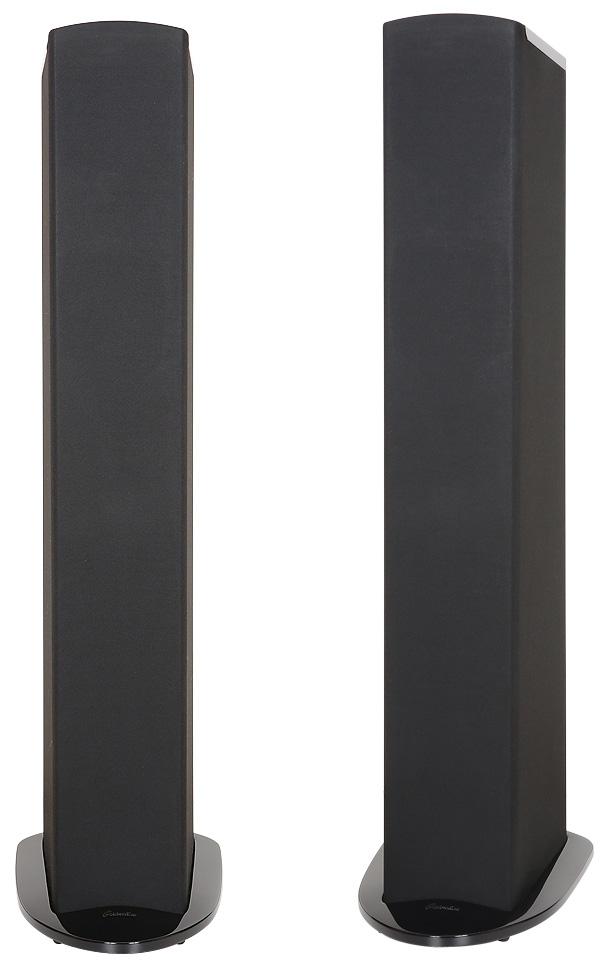GoldenEar Triton Five Loudspeaker

 This slim column hides its light under a bushel – or at least a sock – but is an addictively attractive performer
This slim column hides its light under a bushel – or at least a sock – but is an addictively attractive performer
You might seem to be setting yourself up for a fall if you call your company GoldenEar Technology. It's a cue for all those jokes about effects heard only by those claiming such aural ability, grist to the mill of the 'design them properly and they all sound the same' brigade. Fortunately for the team behind the GoldenEar Triton range – including the £2300 Triton Five we have here – the product lives up to its billing, for the Five is perhaps the most striking speaker I have heard at this price level for a very long time.
Led by company founders Sandy Gross and Dan Givogue, GoldenEar can claim involvement in some highly successful speakers of the past. After all, Gross co-founded Definitive Technology with Canadian Givogue, and Polk Audio with Matthew Polk, before giving up semi-retirement in 2010 to kickstart GoldenEar.
Sock It To 'Em
Based in Stoneville, Maryland, just north of Baltimore, and with its engineering facilities in Arnprior, Canada, a short distance from Ottawa, the company's resources include a full-size anechoic chamber the equal of Canada's famous National Research Council facility. Its 'sound first' engineering philosophy is immediately apparent when you encounter the slim columns, just over 112cm tall with plinth, of the Triton Five.
Like all the speakers in the company's range, it eschews elaborate woodwork, expensive veneers and glitzy trim. Instead the speaker is wrapped in a simple black 'sock', capped top and bottom with high-quality gloss-finished plastic mouldings, thus leaving money to be spent on the sound-critical elements of the design. The sock is designed to remain in place, the company saying it has no effect on the sound, although I gather some Triton enthusiasts would beg to differ, and as you'll read later I had such a ball with the demurely-clad speakers I felt no need to undo the endpieces, slip off the covers, and experiment further. After all, I rather liked the almost anonymous 'stealth' styling of the Triton Fives, the 18.3cm-wide enclosures having minimal visual impact in the room, and the simple lines being so much more attractive than the rather industrial look of the 'naked' speaker seen in the rendering, adjacent.
The essentials of this design, and the styling, are shared across the entire range, from the entry-level Triton Seven, at just under £1600 a pair, all the way up to the flagship Triton Reference, at a sniff below £9500. The scale of the speakers, and the drivers within, is all that changes, so the Reference stands a little under 1.5m tall while some of the models above the Five also pack built-in active subwoofers to boost their low-end ability.
Under The Covers
This isn't the first speaker I've encountered with such hidden technology, but it is one of the most successful. Not that GoldenEar has anything to hide, for within the Triton Five is a range of in-house drivers and some novel engineering. The basic configuration, up at the top of the front baffle, comprises a D'Appolito arrangement of mid/bass drivers and a tweeter the company calls a 'High Velocity Folded Ribbon' (HVFR), the larger drivers venting into a cabinet designed with a slanted baffle and non-parallel panels for the avoidance of standing waves.

The mid/bass drivers themselves are long-throw 6in units with cast baskets for rigidity, developed at the company's Canadian engineering facility. The enclosure behind them vents into a lower chamber where sits a quartet of 8in ABRs, two on each side of the cabinet and mounted low to make the most of reinforcement from the floor.
Meanwhile the HVFR, found across the Triton range, is described as 'pressurising the air, rather than pushing and pulling it, for better impedance matching with the air in the room'. The crossover network, again mounted high up in the cabinet, behind the drivers, is designed to augment the slanted baffle to time-align the drivers for 'a coherent wave-launch directed at ear level at the listening position.'
Real World Values
In common with the speakers from the GoldenEar founders' past, the Triton range is designed as a 'real world' lineup for use with relatively modest amplification as well as the more serious stuff. The promotional material also suggests the Fives' use with an AV receiver and the company's series of centre/height speakers, surrounds and active subwoofers to create multichannel audio/home cinema systems.
























































